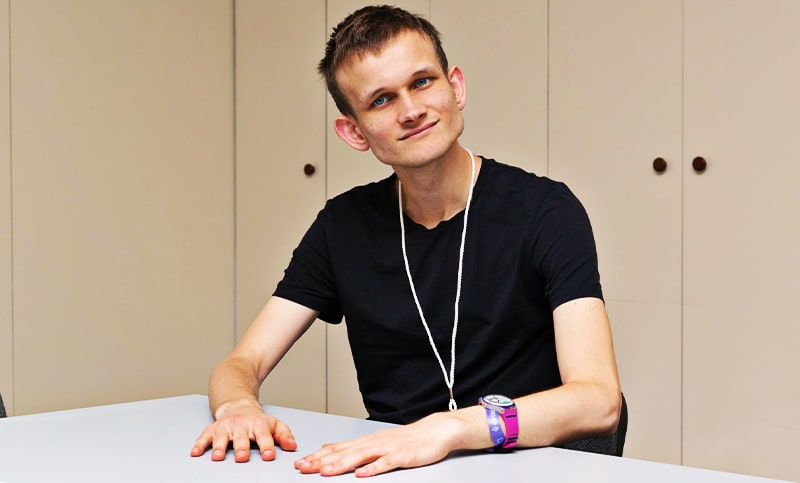As the community is still in the post-Merge high, Ethereum co-founder Vitalik Buterin published a blog post titled “What kind of layer 3s make sense?” outlining his concept of layer 3 protocols.
Layer-3s are also possible, but you cannot put a layer on top of Layer 2 to increase scalability, according to Vitalik Buterin.
Buterin noted that stacking two layers with similar designs on top of one another presents a number of difficulties. For instance, data availability restrictions and reliance on Layer-1 bandwidth for urgent withdrawals can make it difficult to stack two layers.
Rollups reduce the amount of information a transaction must store on the Layer-1 blockchain in order to make it accessible and verifiable.
The data is condensed from 100 to 16 bytes in the event of a simple token transfer. According to Buterin, transaction data is compressed from 600 bytes to 80 bytes for ZK-SNARK transactions that maintain secrecy.
However, Buterin noted that data can only be compressed once. Rollups on top of rollups cannot deliver considerable advantages in scalability because of this, he noted.
StarkWare, which runs StarkNet, a ZK-rollup that acts as a Layer-2 Ethereum scaling solution, presented three distinct scenarios for the application of Layer-3s. All three of these visions are deemed fundamentally reasonable by Buterin.
Layer-3s can be utilized in the first scenario for specialized purposes like privacy. In this scenario, providing more scalability would not be the goal. A Layer-3 would provide the tailored functionality required for various use cases, whereas Layer-2 would scale applications.
In the second vision, Layer-2 enables scaling for generic purposes, and Layer-3 delivers customized scaling via specialized applications. The EVM or rollups, whose data compression is specialized for particular data formats, would not be used by Layer-3 to calculate data.
In the third vision, Validiums, which uses SNARKs to validate computation, allows Layer-3s to provide weakly-trusted scaling. Here, a reliable third party is in charge of data accessibility. Validiums, according to Buterin, are extremely undervalued and vastly cheaper than rollups despite having a worse security grade.
Also Read: Ethereum’s Vitalik Buterin Introduces his Book “Proof of Stake”
Rollup transactions are inexpensive, but each time they send a batch of transactions to a Layer-1, rollups must pay a significant fixed fee. According to Buterin, the fixed cost for optimistic rollups that operate on top of Layer-1s can reach 21,000 Layer-1 gas every batch whereas the cost for ZK rollups can reach 400,000 gas per batch.
Rollups extend batch intervals by delaying the submission of more transactions in a batch to reduce costs. As a result, users must wait a very long time to receive a confirmation of their transactions.
Gas per transaction would be 10,368 for a ZK rollup with a processing speed of 5 tps to submit a batch of transactions in each Ethereum block (every 12 seconds). The gas per transaction drops to 2,368 if the batch interval is raised to 1 minute.
With batch intervals of 12 seconds, the gas per transaction for a ZK rollup inside a ZK rollup drops to 501. Therefore, the time and cost tradeoff for rollups can be fixed by Layer-3s.
Buterin argues that the rollup on top of the roll-up paradigm is illogical since stacking the same scaling solutions on top of one another does not “work well.” However, he contends that a three-layer structure that divides the second and third layers’ tasks and goals can be effective.
However, what may be regarded as a layer and what cannot, is a semantic question that has not yet been resolved, according to Buterin. He offered his own explanation of the characteristics that make up Layer 2 –
- Their purpose is to increase scalability
- They follow the “blockchain within a blockchain” pattern: they have their own mechanism for processing transactions and their own internal state
- They inherit the full security of the Ethereum chain
According to Buterin’s definition, Layer-2s include optimistic and ZK rollups, but not Validiums, proof aggregation techniques, on-chain privacy solutions, or Solidity. Not all of them ought to be referred to as Layer-3, even though some of them may be, he wrote.
Buterin said that most Layer-3 debates are still hypothetical and that it seems premature to finalize definitions when the architecture of the multi-rollup ecosystem is far from fixed in stone.
Buterin anticipates that Layer-3 constructs will become more advanced and simple as the Layer-2 scaling ecosystem develops.
Also Read: All about the Ethereum Merge






